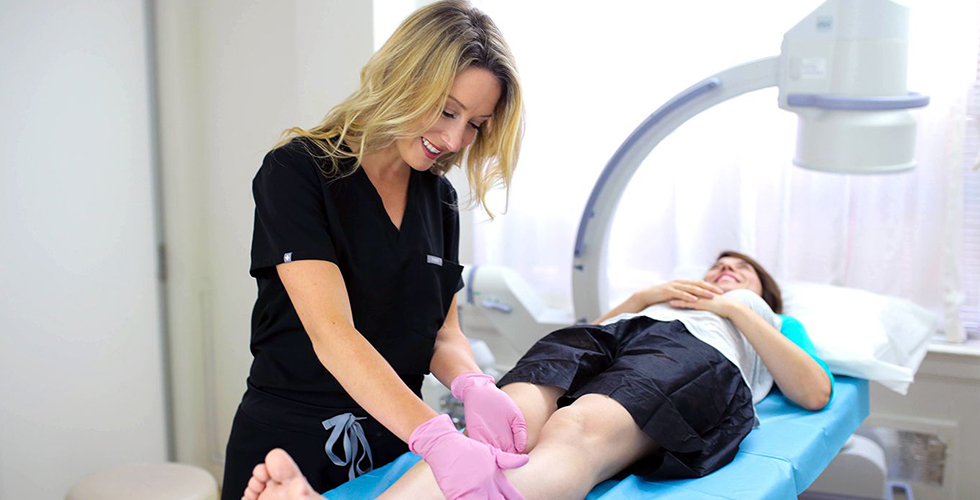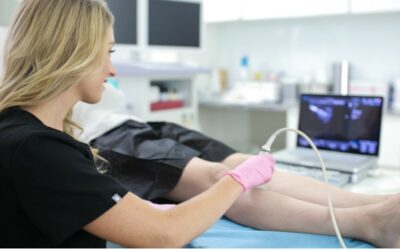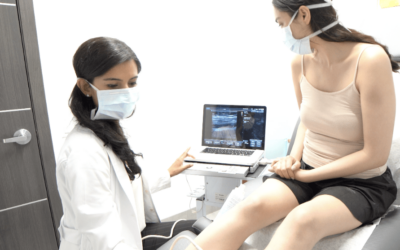What Does a Vein Clinic Do? Top Vein-Related FAQs, Answered
April 24, 2022
What does a vein clinic do?
A vein clinic is a medical center responsible for the diagnosis and treatment of vein-related conditions, such as spider veins and varicose veins. As such, vein clinics treat your unhealthy leg veins, but each medical center has a unique treatment process. You should generally avoid vein clinics that only treat superficial varicose veins and spider veins without addressing the root cause.
Instead, you should focus on vein clinics that understand the root cause of your vein problems before curating a treatment plan, thus ensuring long-lasting results with minimal risk of recurrence. We can’t speak for the vein treatment process at all vein clinics. But we can provide a comprehensive overview of the vein treatment process at our center for vein treatment in Texas.
Examine your leg veins and symptoms
Your vein treatment in Texas starts with an initial consultation with the vein doctor. The vein doctor carefully examines your leg veins and symptoms to determine the likelihood of chronic venous insufficiency, the root cause of most vein problems. Some of the most common symptoms of vein disease include leg heaviness, frequent leg cramps, restless leg syndrome, and leg swelling, especially at the end of the day or after long periods of inactivity.

Diagnose the root cause of your vein problems
After examining your leg veins and discussing your symptoms, the vein doctor will have a good understanding of your condition. However, we always perform a thorough ultrasound scan, known as duplex ultrasound, to visualize the blood flow in your leg veins. The ultrasound sonographer will move the handheld device on your legs to project an image of your leg veins on a computer screen, revealing underlying chronic venous insufficiency.
Curate a personalized vein treatment plan
After diagnosing chronic venous insufficiency, the vein doctor will curate a personalized vein treatment plan for you. Varicose veins can be treated using multiple procedures, but our vein doctors select the ideal treatments for your symptoms, diagnostic results, goals, medical history, and insurance coverage options. The vein doctor will also walk you through every step of the procedure, and you’ll receive a complete breakdown of your vein treatment cost in advance.
BOOK AN APPOINTMENT
Vein Treatments are covered by most major medical insurances, including Medicare. Verify your coverage for FREE today!
Use minimally invasive procedures to treat vein disease
The best minimally invasive vein treatments include radiofrequency ablation, endovenous laser ablation, and venaseal. The ablation procedures involve channeling thermal energy or laser energy into the diseased saphenous vein — via a catheter — to make it collapse. The diseased vein is absorbed by the body. The venaseal procedure involves injecting a medical-grade adhesive into the diseased vein to seal its walls shut, rerouting the accumulated blood into healthier leg veins.
Remove the superficial varicose veins and spider veins
The vein doctor will perform ambulatory phlebectomy or sclerotherapy to remove the superficial varicose veins and spider veins. These are cosmetic procedures that only affect the superficial veins, so they’re performed after the primary vein treatment. Ambulatory phlebectomy involves the physical extraction of superficial varicose veins through small incisions on the skin. Sclerotherapy involves injecting a sclerosant medicine into the spider veins to seal them shut, facilitating their absorption by the body.
Help with the recovery and aftercare
The vein doctors at our vein treatment centers help with your recovery and aftercare. The entire procedure concludes within an hour, following which the vein doctor will provide an overview of your recovery guidelines. You can resume your daily activities immediately, but you should avoid heavy lifting and strenuous workouts for a few days. You should also wear compression stockings for a few days or weeks to minimize the risk of vein disease recurrence.
What happens at a varicose vein consultation?
During the varicose vein consultation, the vein doctor carefully examines your leg veins to determine if you have spider veins or varicose veins, or both. The vein doctor will also examine the location, size, and spread of varicose veins to determine if you might have underlying vein disease and select the appropriate treatment plans. Furthermore, the vein doctor will review your medical history and discuss your symptoms — they will ask if you experience leg heaviness, frequent leg cramps, restless leg syndrome, or other symptoms of vein disease. This helps them diagnose the root cause of your vein problems.
What do vein treatments do?
Minimally invasive vein treatments neutralize the diseased saphenous vein responsible for your vein problems. The diseased vein is collapsed or sealed using thermal energy, laser energy, or medical-grade adhesives, thus allowing the accumulated blood to flow into healthier leg veins. This restores optimal blood circulation to the heart, and the diseased vein is eventually reabsorbed by the body. After the primary vein treatment, the vein doctor can focus on removing the superficial varicose veins and spider veins using ambulatory phlebectomy or sclerotherapy.
How do I know if I need vein treatment?
You know you need vein treatment if you have spider veins, varicose veins, or other symptoms of chronic venous insufficiency, such as leg heaviness, restless leg syndrome, frequent leg cramps, skin discoloration, leg swelling, leg ulcers, or deep vein thrombosis. The early signs and symptoms of vein disease are fairly benign and often misattributed to aging or exhaustion. However, you know the symptoms are caused by vein disease if they worsen at the end of the day or after long periods of sitting or standing still.
If you identify the signs and symptoms of vein disease, please schedule an appointment at our center for vein treatment in Texas.
Meet Our Houston
Vein Doctor
WHAT TO EXPECT IN OUR
Texas Vein Center
contact us today
Call us
Book online
Visit our Book Appointment page and instantly request an appointment at a Texas vein center near you. We offer Free Insurance Verification before your appointment.
Get directions
Learn how to easily get to the Texas vein center nearest to you.
FEATURED POSTS BY VEIN DOCTORS
What is a Varicose Vein Specialist Called? We Answer Your Vein Treatment Questions
What is a Varicose Vein Specialist Called? We Answer Your Vein Treatment QuestionsApril 23, 2022What is a varicose vein specialist called?The official terminology for a varicose vein specialist is a “phlebologist.” The name is derived from “phlebology,” the branch of...
Are Varicose Vein Treatments Covered by Insurance? And Other Vein-Related FAQs
Are Varicose Vein Treatments Covered by Insurance? And Other Vein-Related FAQsApril 23, 2022Are varicose vein treatments covered by insurance?Generally speaking, insurance policies cover medical treatments that are deemed “medically necessary.” As such, to understand...
What Kind of Doctor Specializes in Veins? We Answer Your Top Vein Questions
What Kind of Doctor Specializes in Veins? We Answer Your Top Vein QuestionsApril 23, 2021What kind of doctor specializes in veins?Vein doctors, also known as phlebologists, are the medical professionals who deal with vascular health, including the diagnosis and...
What kind of specialist treats varicose veins?
What kind of specialist treats varicose veins?April 09, 2022What kind of specialist treats varicose veins?If you have spider veins, varicose veins, or other vein problems, you should consult a phlebologist, also known as a vein doctor. Phlebology is the branch of...


